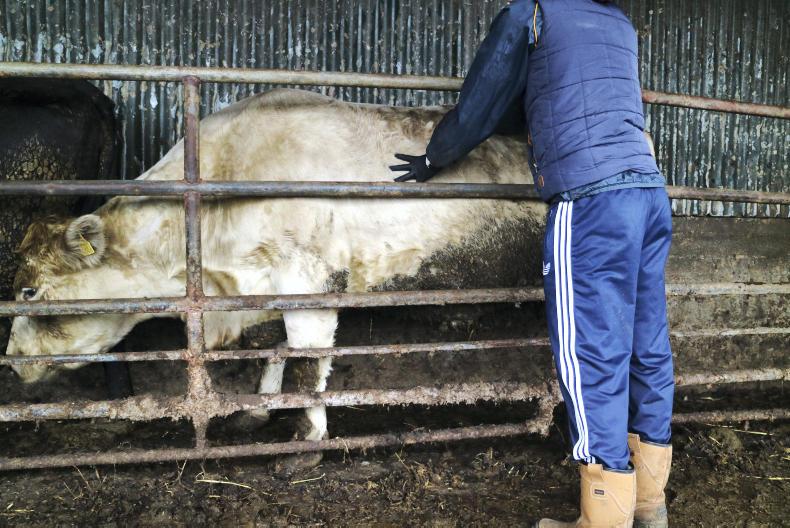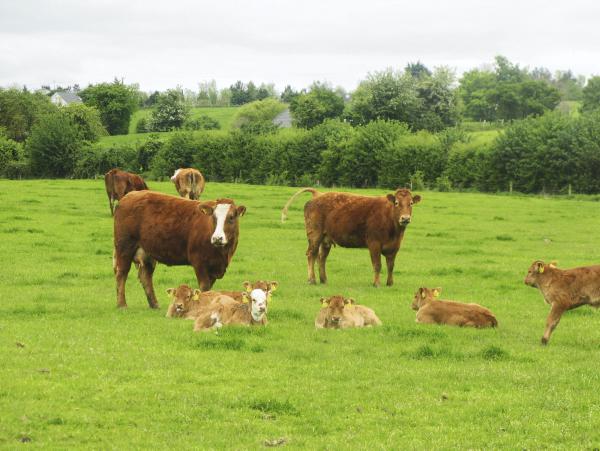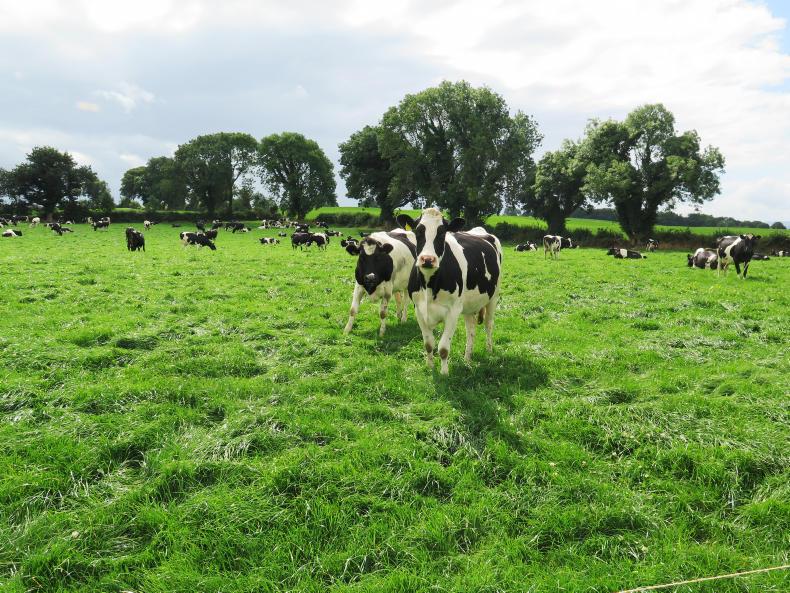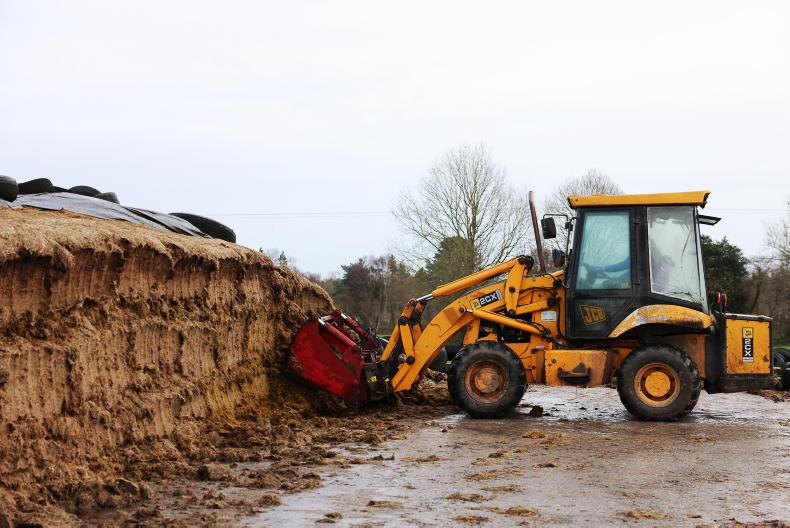Body condition scoring is essentially the practice of estimating how much body fat an animal is carrying. Fatness affects the production of hormones that control things such as intake and the reproductive system. Very thin animals can have sluggish reproductive systems and fat animals will have reduced intakes. Post-calving, both of these scenarios are disastrous and won’t help a herd’s calving interval.
The targets
Body condition scoring involves physically handling an animal at three points: the ribs, loin and tail head. We assign a score to each of these points on a one to five scale – one being extremely thin or emaciated and five being grossly obese. The overall score is an average of these three figures.
We want a spring-calving cow to calve at a body condition score (BCS) of 2.5. Ideally, she will have come into the house the previous winter at a score of 3 to 3.25 and lost some condition. The idea behind this is to save on winter feed costs – the cow builds up her body reserves at grass where energy is cheap and can be fed lesser quality material (62% to 66% DMD grass silage) and mobilise some of her own fat reserves to see her through the winter.
One body condition score in a continental suckler cow is equivalent to 70kg of liveweight. While such condition loss during the winter is ok, we absolutely must avoid losing more than 0.5 of a score between calving and breeding, where target is a BCS of 2 to 2.25. Some condition during this time is inevitable, particularly in sucklers with dairy genetics and it is these types that are often problematic.
Ribs
At a score of 2.0, the long ribs will be visible – particularly the last three to four. The ribs themselves can be felt with the slightest pressure (as illustrated in the pictures above). At a BCS of 3.0, there will be a covering of flesh beginning across the ribs and only the back one or two will be visible.
Depending on the breed, there may be none visible (well-bred continental cows). Some pressure will be needed to feel individual ribs at a 3.0.
Loin
The loin is the simplest of the three spots to evaluate. Cup your hand and press it lightly against the animal’s loin (area directly in front of hips). At a score of 2.0, the spinous processes (short ribs jutting out parallel to the ground from spine) will be immediately evident to touch and feel rounded at their endpoints. At a score of 3.0, firm pressure will be needed to individually identify processes with the palm of the hand.
Tail head
There are three things to look for on the tail head.
At a score of 2.0, there will be a slight crevice between the rump and tail head but at a score of 3.0 there will be no crevice, only a smooth transition between the two. Pressing perpendicular to the ground on the pelvis bone (pictured above), to the side of the tail itself, there will be minimal pressure required to feel bone at a score of 2.0. Firm pressure will be required at a score of 3.0. Finally, only skin can be pulled up from the pelvis bone (pictured left), beside the tail head, at a score of 2.0, while a thumb-full of flesh can be lifted at a score of 3.0.
After calving, all cows should go on to the best silage in the yard. On-track (optimum condition) cows will get by on 70% DMD silage provided they can get to grass within four to five weeks. Thin cows (with a BCS of 2.25 or less) will need 1kg to 2kg of meal, along with this silage, provided they will be at grass within five weeks. Post-calving minerals with magnesium should be given in all cases.
A common complaint on some of the very best farms – silage is simply too good and sometimes there can be reluctance to go with too much straw in the diet. These cows need to get to grass as soon as possible. Condition loss will be inevitable and getting to grass will limit it. Take a note of these cows at calving and monitor when they show their first heats and whether they hold to the service.















SHARING OPTIONS